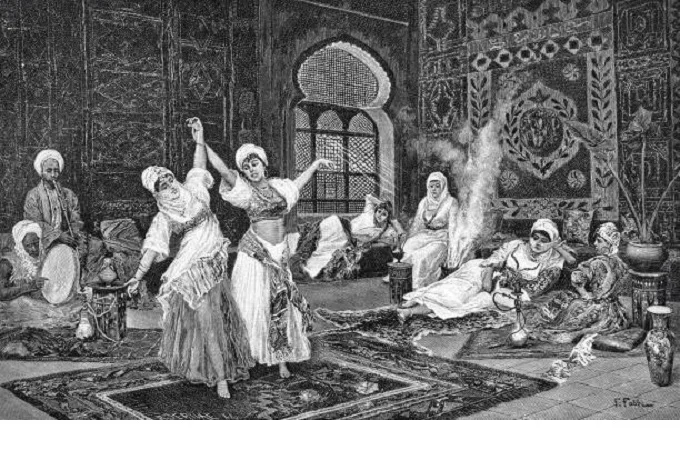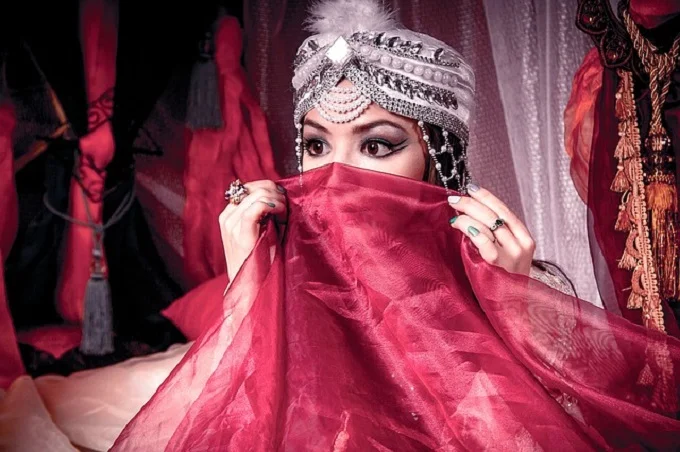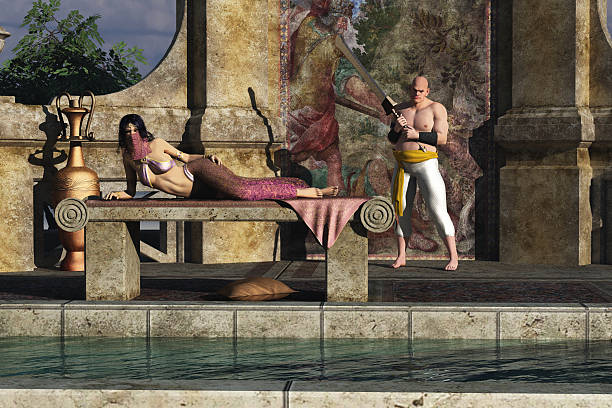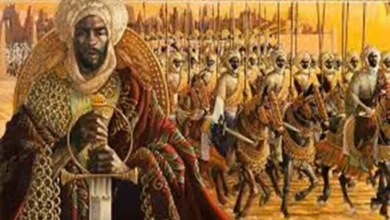What was life like in the sultan’s harem?

What do most people know about harems? These were the private “brothels” of the eastern rulers, where they could relax after military campaigns or escape from the routine, lying in bed with any woman they liked. But in fact, the harems were much more complex than the representation described.
The women in the harems weren’t prostitutes at all. On the contrary, their lives were shrouded in mystery, and they could be called something like a separate caste. The word “harem” itself comes from the Arabic “harim,” which translates as “sacred” or “forbidden.” Indeed, it was a forbidden place where outsiders were not allowed, and it certainly was not something like modern entertainment establishments with girls of easy virtue.
Let’s take a closer look at the life of the inhabitants of Turkish harems and see what it was and why it was better than many others.
Comfort in harems was comparable to the chambers of the Sultan

Even the most expensive brothels of our time cannot be compared in splendor to harems. The center of the harem was a large building with a huge courtyard that housed gardens and swimming pools. It was a quiet, peaceful place where women enjoyed nature, socialized, and gathered together for reading and prayer. It seems that it was heaven on Earth, especially centuries ago, but do not forget that the harem was, in fact, a golden cage. And yet, the concubines lived in conditions available only to the wealthiest people of those times.
By the way, not only the Sultan’s concubines lived in the harem, but also his official wives, relatives, and even sons under 12 years old. Only after reaching this age were young boys allowed to appear at court.
Women were isolated from the outside world and guarded as the most important treasure in the country
This is evidenced by the name alone, which, as we described above, translates as “ban.” The concubines were guarded as the most expensive treasure in the empire and made sure that no one except the Sultan could enjoy their splendor, not only physically but even visually.
It was almost impossible to see the concubines, and even high-ranking courtiers were checked for “trustworthiness.” At the same time, the women in the harem were respected, and no one, even in the patriarchal society of the Ottoman Empire, would dare to talk to them as unequal, let alone the opportunity to touch them.
Castrated men guarded Harem

The harem was considered an intimate place, especially for the ruler, where the most beautiful girls from all over the empire lived. Any man, no matter how strong he was, because of his instincts could not resist the charm of beauties trained in the art of seduction. Everyone understood this, so only eunuchs – castrated men were appointed to guard the harems. As a rule, these were slaves captured on military campaigns or bought in slave markets.
Interestingly, there were two types of eunuchs in harems – black and white. Black eunuchs were completely deprived of all s*xual characteristics, while whites were allowed to leave not only the pen!s but even the scrotum. However, because of this, white eunuchs were assigned fewer responsibilities than black ones.
At the same time, black eunuchs often became very influential men at court, sometimes communicating on equal terms with high-ranking officials. So, with all the skin color bias in those days, black eunuchs could achieve great heights.
A hierarchy was built in harems
Usually, harems are shown as women of equal status in society, but this is not so. They were divided into peculiar castes, where Valide(Mother) stood above all – women who gave birth to sons later became sultans. Slightly below were the Haseki Sultan, and even below were several more categories of women, depending on their position and type of activity.
The most famous in Western literature is the odalisques, which are mistakenly considered to be prostitutes. Odalisques were ordinary maids, as the direct translation of the Turkish word odalık – “chambermaid,” speaks about.
The main woman in the harem directly influenced politics
As we said above, in the harem was the main woman who bore the title of Valide, which indicated that she gave birth to the future Sultan. She influenced her husband, the current ruler, and chose concubines for her son, decided with whom the girls from the harem could enter into alliances, and could instantly decide the fate of any concubine, from career advancement to exile.
The Valide, like the Haseki Sultans, was much higher in status than many court men and literally could give them orders without meeting any resistance. But with this valid, she was deprived of her power and position in society after her son’s death, therefore the clever representatives of this “caste.” However, they partially influenced the policy of the empire, tried not to cross the path of the courtiers.
Not all women in the harem were s*x slaves

Another popular misconception is that all girls fell into the harem against their will, which was, in fact, s*xual slavery. Islamic law prohibited the enslavement of free Muslims and free non-Muslims living in states like the Ottoman Empire.
As we mentioned above, in the harem lived the legal wives of the Sultan, who were free women since they got married at will. As for the rest of the girls, not all of them had to sleep with the ruler. Moreover, they received an education, and some were even married off to members of the court. Women were taught the art of seduction, playing musical instruments, reading poetry, dancing, literature, geography, history, and calligraphy. Many of the concubines were much more educated than most of the men of the day.
Only a part of the girls was required to have s*xual intercourse with the Sultan. The rest were engaged in everyday life, entertained the ruler, and looked after their master.




